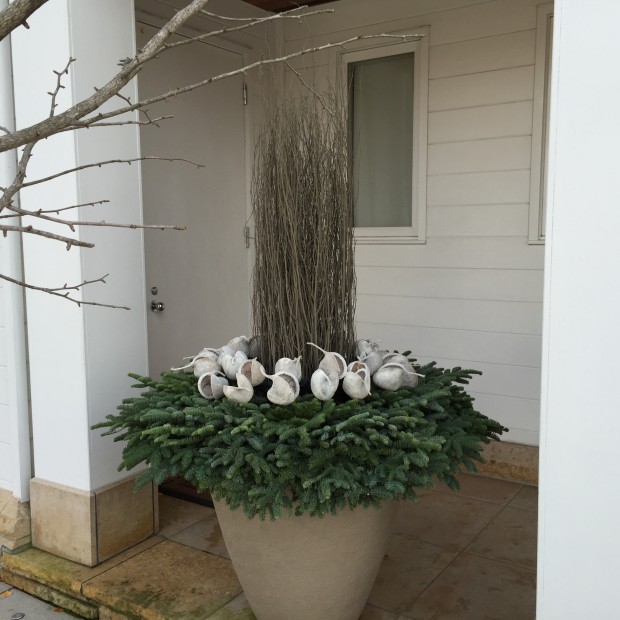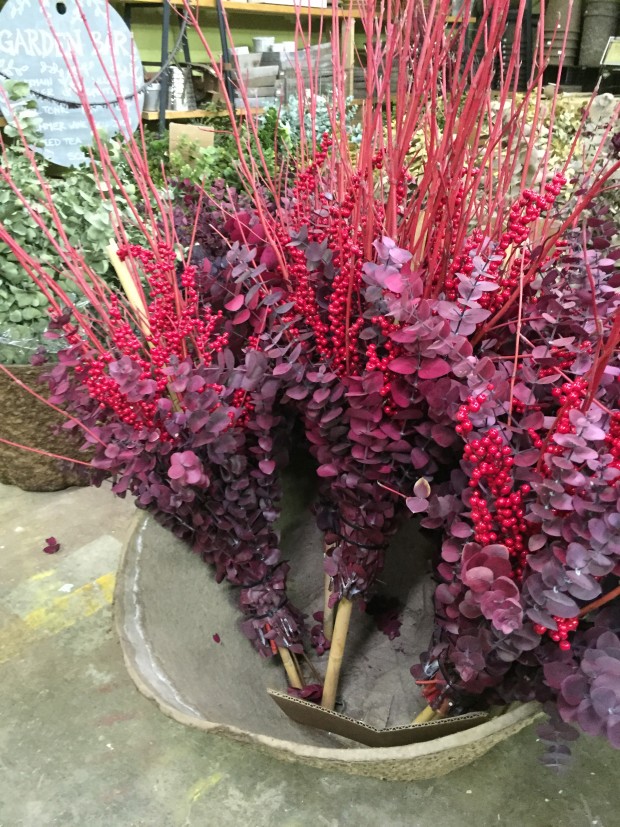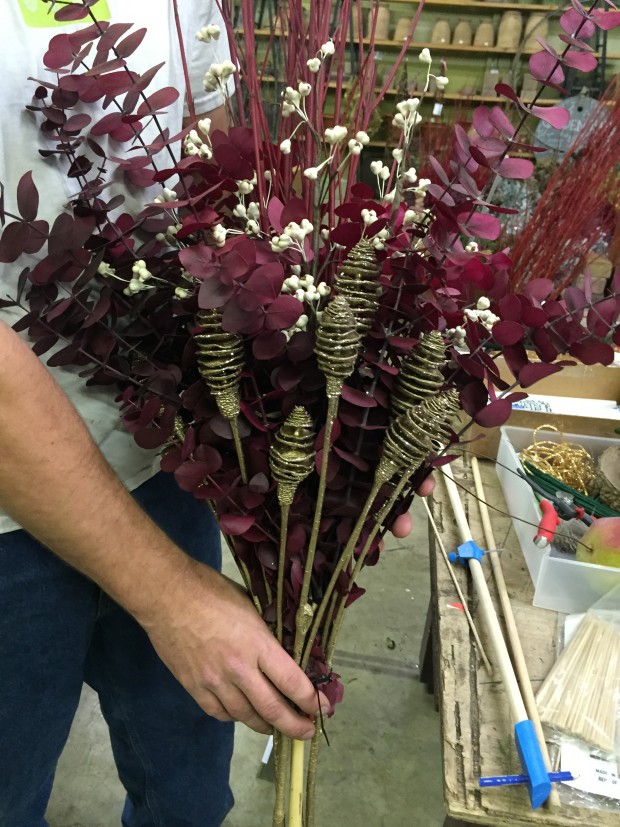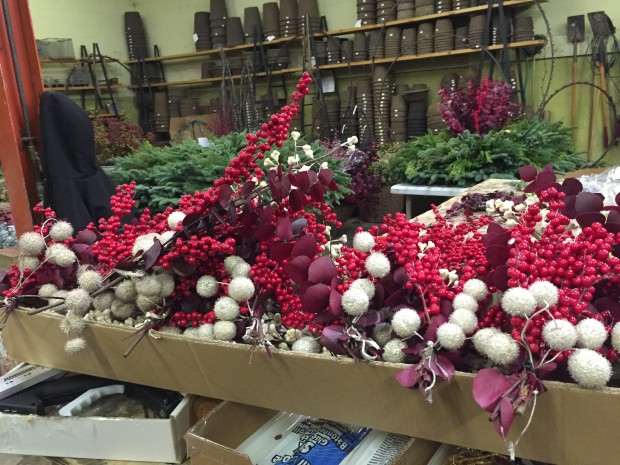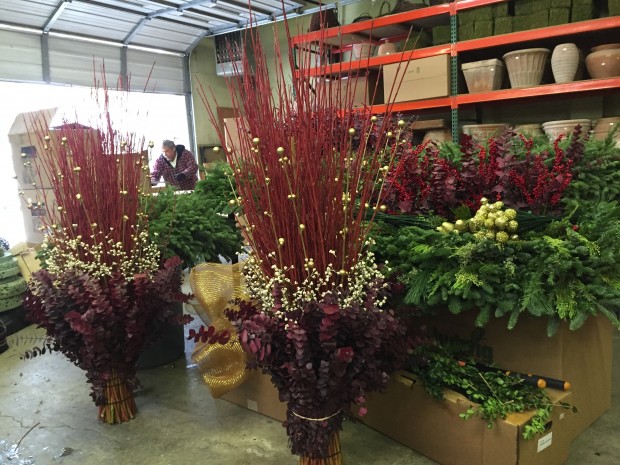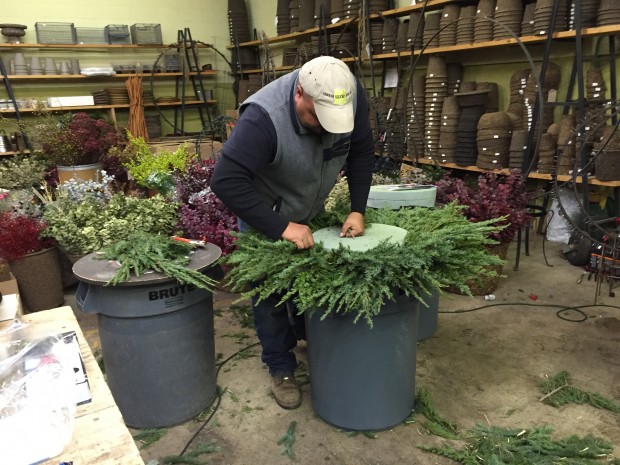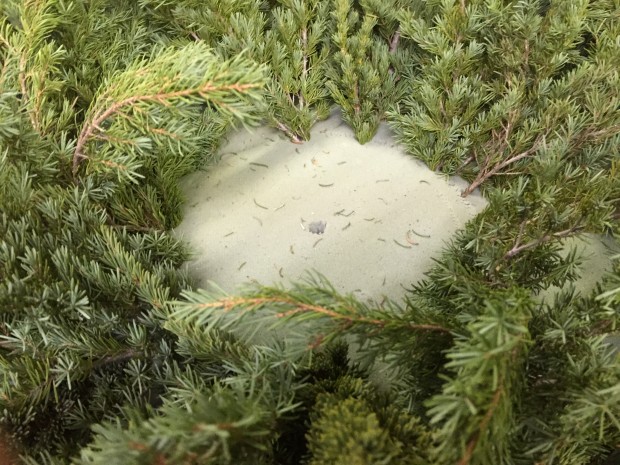 gray sticks, sparkle picks and lavender eucalyptus
gray sticks, sparkle picks and lavender eucalyptus
 4 pots for the holidays and winter
4 pots for the holidays and winter
 plum eucalyptus and lime berry picks
plum eucalyptus and lime berry picks
 light ring on a stand/base that is covered with branchy twigs
light ring on a stand/base that is covered with branchy twigs
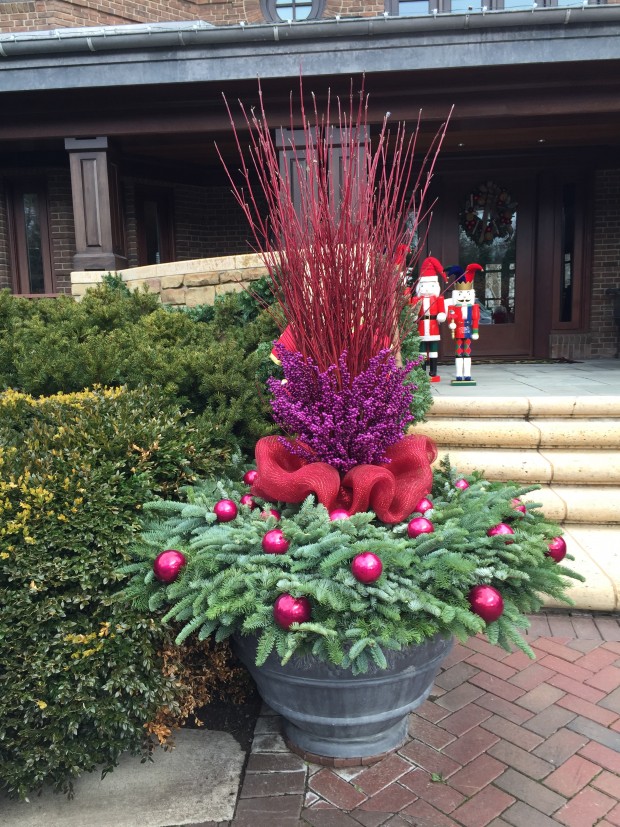 red and purple for the holidays
red and purple for the holidays
 hanging baskets with boxwood and berry picks
hanging baskets with boxwood and berry picks
 steel topiary cone with grapevine and pine cone picks
steel topiary cone with grapevine and pine cone picks
 white eucalyptus and lime berry picks
white eucalyptus and lime berry picks
 mixed green with extra incense cedar
mixed green with extra incense cedar
 This fall pot looks too good to take apart. We’ll come back later.
This fall pot looks too good to take apart. We’ll come back later.


